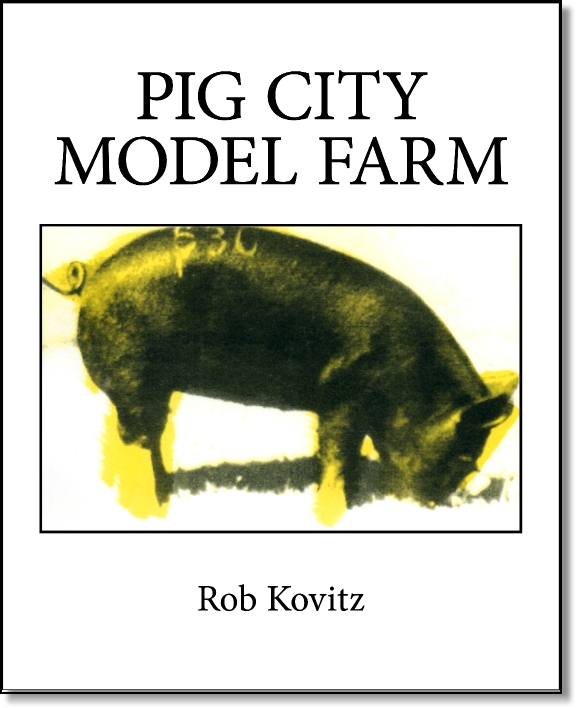review
Review by Cedric Price
AA Files 26, Fall 1994, pp. 99-101.
Pig City Farm started as a thesis, with the first submission stating ‘I want to profess the implausibility of making a single sustained and systematic design argument. The unitary building project is not the reason for architecture, but its affect. It is an affect which is becoming less possible, less appropriate, and less defensible. It is a kind of utopia.’ It is therefore likely that the most appropriate definition of thesis in this instance is an unproved statement put forward as a premise in an argument. And it is in the making of this ‘argument’ that one strength of this book lies.
Various games played with the twin scenarios of the production of pig meat and the accumulation of architecture are at times woven together and at other times held apart for comparisons as to their similarities and dependencies. Cruelty and complicity are implied, while the author's conviction that these comparisons are significant is moving, if not wholly convincing.
The argument, the theme and indeed the whole story is made by a brilliant selection of quotations, abstracts, diagrams and photographs, presented with an ordered generosity. The book is a graphical delight. Its size and the thickness and texture of the paper make it pleasing to handle, while the generous layout enables the reader to make copious notes at the appropriate spot. Significantly, the pages are not numbered.
The comparative simplicity of the chosen ‘academic’ task allows Kovitz to suggest labyrinthine comparisons not only with society but with man's duplicity of purpose. This is achieved with a masterly control of the collected material, its faithful reproduction and meticulous indexing. Such order and clarity enables the reader continually to examine, if not question, his own attitude, through time and rereading, to a range of moral, ethical and political conditions and situations. I personally found the author 's superior attitude to man's insensitivity rather jarring. He has humour but little generosity.
The recognition of the physical similarity of pig to man is a secondary tool used for the selection of the material, particularly the graphic. The felicity of Kovitz's selections is highlighted in his use of just two quotations for the entire ‘Author’s Note’. The second of these applies equally to the book and this critique:
I mean to speak to you by (roundabout) bypaths: sometimes offended and enraged, often withdrawn and hard to pin down, occasionally brimful of lies, until everything becomes plausible. Certain things I should like to pass over in circumspect silence. I anticipate a part of the part, whereas another part will turn up only later and partially. And, so, if my sentence twists, turns, and only gradually tapers to a point, don't fidget and don't bite your nails. Hardly anything, believe me, is more depressing than going straight to the goal. (Gunter Grass, from The Diary Of A Snail)
Another strength of this book, and I think the most important, lies in its open-ended form with respect to both argument and ‘evidence’. Architectural theses should not merely explore a chosen field of theory or research, but in so doing should also provoke the reader to examine his attitude to or extend his knowledge of the subject.
The readers of such a thesis are likely to be in sympathy with, or at least to have prior interest in or intelligence of, the subject, the proposition, the particular research. It will encourage, enlarge, bore, satisfy or reassure those like minds, and take its place, large or small, in man's collective knowledge, in form retrievable. But what if it is an intelligent carpet-bag of opinions, views, comparisons, open-ended discussions and doubts? Then the importance of identifying with its intentions, appetites or enquiries is soon replaced by the reader’s using the piece with constructive greed as another tool with which to tum his own mind.
Thus do I approach the real importance, to me, of this book. It's not Engels, or the social delineation of the Chinese revolution, or the brilliance of Charles Fourier that draws me. It's its ‘containment’, in physical form, of a mix of ideas and images that I imagine I have part seen or thought of before, somewhere. Now they are captive and can be used, to my order and at my own frequency. This book can be devoured, as if a pig. I like it very much and suggest that a further edition be prepared thus for the delectation of others.
Cedric Price
treyf books
keep refrigerated
![]()
